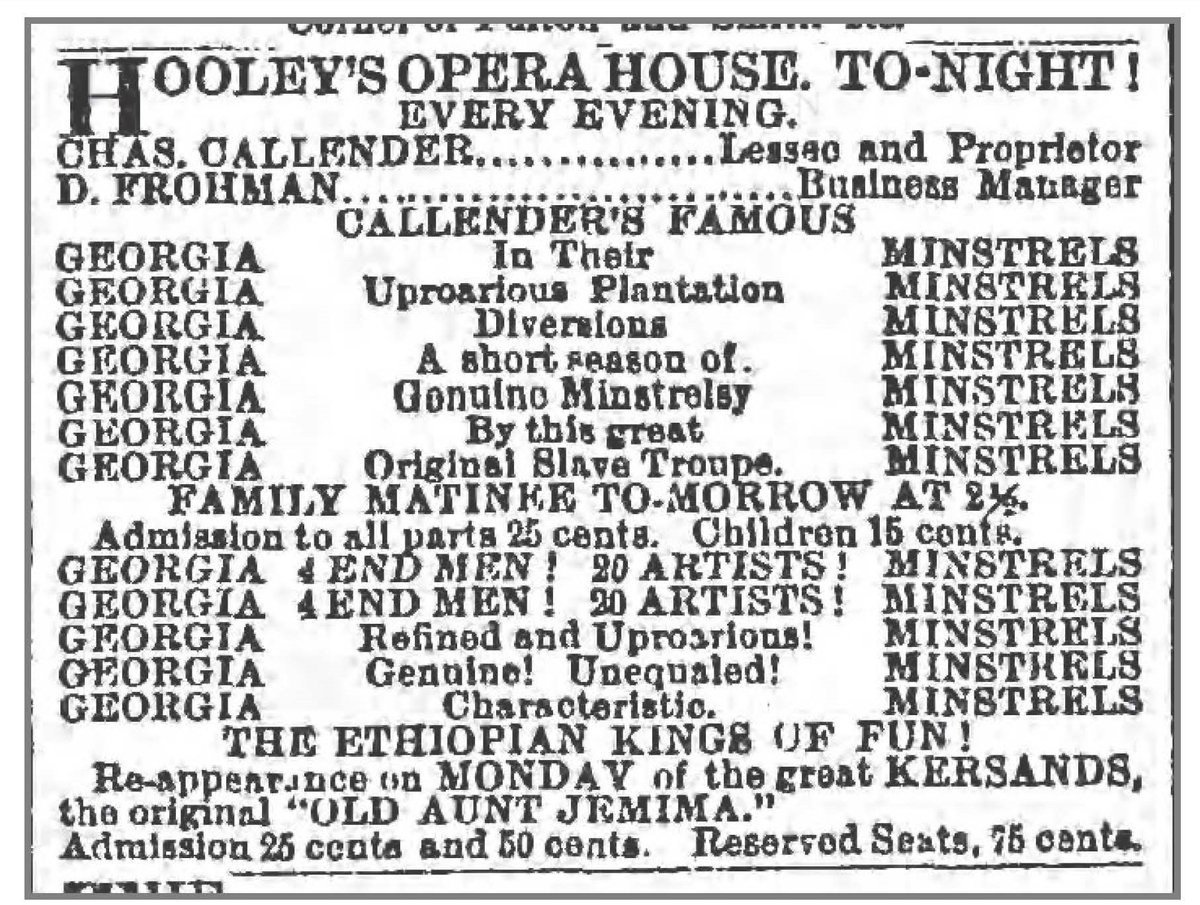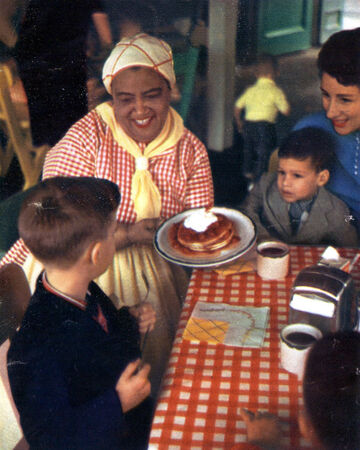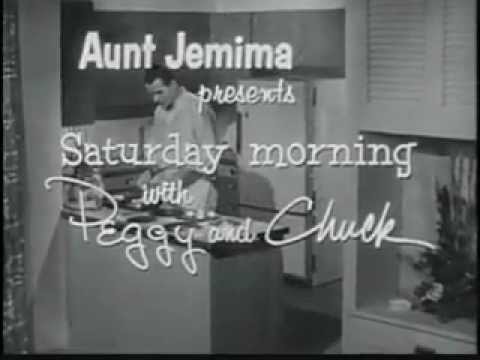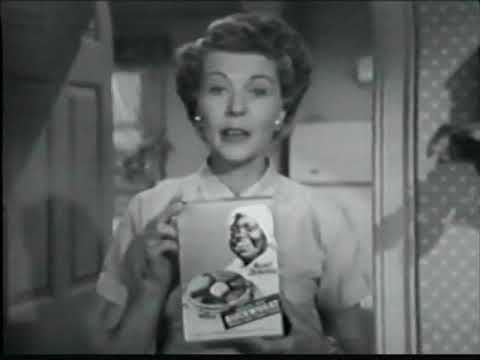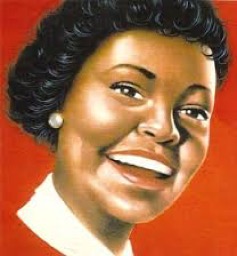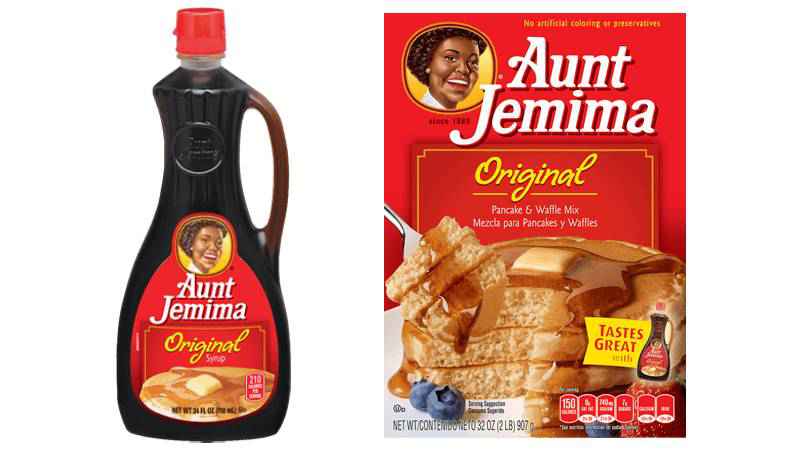It seems a lot of folks who saw the news about Aunt Jemima are taken aback, “Aunt Jemima isn’t racist!” “How could you get rid of Aunt Jemima!” So for those who might be interested, here’s a little thread: https://www.nbcnews.com/news/us-news/aunt-jemima-brand-will-change-name-remove-image-quaker-says-n1231260">https://www.nbcnews.com/news/us-n...
1. Aunt Jemima existed before the pancake mix. Her depiction was popularized in the 1870s in minstrel shows/songs. The advo below features a performance by Billy Kersands, a Black performer who did Black Blackface portrayals of Aunt Jemima. White and Black performers did this.
2. We get to pancakes with 2 White businessmen, Charles Underwood and Christopher Rutt, who launched Aunt Jemima in 1889, a year after they purchased a defunct flower mill. Rutt had seen an Aunt Jemima minstrel show and thought she would be the perfect hook for their company.
3. Rutt was right. Aunt Jemima appealed to White folks esp because of her depiction of a Mammy. She was Mammy incarnate and represented culinary expertise via a product so easy to make that it was almost as if White folks had a Black servant doing it for them. Ad is from 1897.
4. That’s always been part of the marketing lore of Aunt Jemima, why Maurice Manring aptly titled his book Slave in a Box. Mammy/Aunt Jemima represented ease/comfort wrapped up in a caricatured version of blackness that White people found appealing.
https://www.amazon.com/Slave-Box-Strange-Career-American/dp/0813918111/ref=sr_1_1?dchild=1&keywords=aunt+jemima&qid=1592413395&s=books&sr=1-1">https://www.amazon.com/Slave-Box...
https://www.amazon.com/Slave-Box-Strange-Career-American/dp/0813918111/ref=sr_1_1?dchild=1&keywords=aunt+jemima&qid=1592413395&s=books&sr=1-1">https://www.amazon.com/Slave-Box...
5. But Aunt Jemima went further than just the Mammy character. One of the strengths of the product was its varied marketing campaign, esp in the early to mid 20th century. Aunt Jemima was marketed in magazines, radio shows, on posters and billboards, basically everywhere.
6. Plus the company used real life actors, most notable Nancy Green and later Anna Robinson (see below), who portrayed Aunt Jemima at the 1933 World’s Fair, to make Aunt Jemima come to life. These portrayals continued after Quaker bought Aunt Jemima.
7. Those real life portrayals continued for a long long time. You can see this at the Disneyland Aunt Jemima Pancake House especially, which operated from 1955-1970. There you could get a pic with a real life Aunt Jemima played by Aylene Lewis.
8. The 1930s-50s represented the fullest of this cross marketing campaign. Take for instance the Aunt Jemima Variety Hour. A generation of radio listeners grew up with “smiling, happy, Aunt Jemima” and a product with “honest-to-goodness tentilatin’ Old South flavor.”
9. In the 1950s, television viewers could tune into “Aunt Jemima presents Peggy and Chuck,” a white couple living in suburban America with their infant son. Here we see how Aunt Jemima offered Cold War Americans reassuring images from a simpler past.
10. But wait, there’s more! In the 1960s Aunt Jemima was the proud sponsor of the Ozzie and Harriet Show. The Nelson family enjoyed Aunt Jemima pancakes regularly, which were again offered as a kind of refuge for White suburban families.
11. Part of the genius, if you will, of the Aunt Jemima brand was its ability to tap into a comforting vision of bygone days when White folks could benefit from subservient Black women. The rebranding of Aunt Jemima in 1989 essentially did the same thing in reverse.
12. The Aunt Jemima of 1989-today was a sanitized version of her former self (and a lot of companies did this, from Uncle Ben to Tom and Jerry). The new Aunt Jemima seemed to downplay or altogether erase (or at least try to) her racist origins.
13. This rebranding was so successful that many folks don’t realize the character originated in racism. But she did. Uncle Ben did. Land o Lakes did. All used stereotypical images of people of color solely to make a profit. All are rooted in a racist, White supremacist past.
And that’s why I, at least, am not sorry to see these products go. If you& #39;d like to know more, check out Manring& #39;s fine book. Also, for a good, introductory text on racism in advertising, books, film, and cartoons, see me and @GD_Smithers: https://www.amazon.com/Racism-American-Popular-Media-Institutions/dp/1440829764/ref=sr_1_1?dchild=1&keywords=behnken+smithers&qid=1592416567&s=books&sr=1-1">https://www.amazon.com/Racism-Am...

 Read on Twitter
Read on Twitter